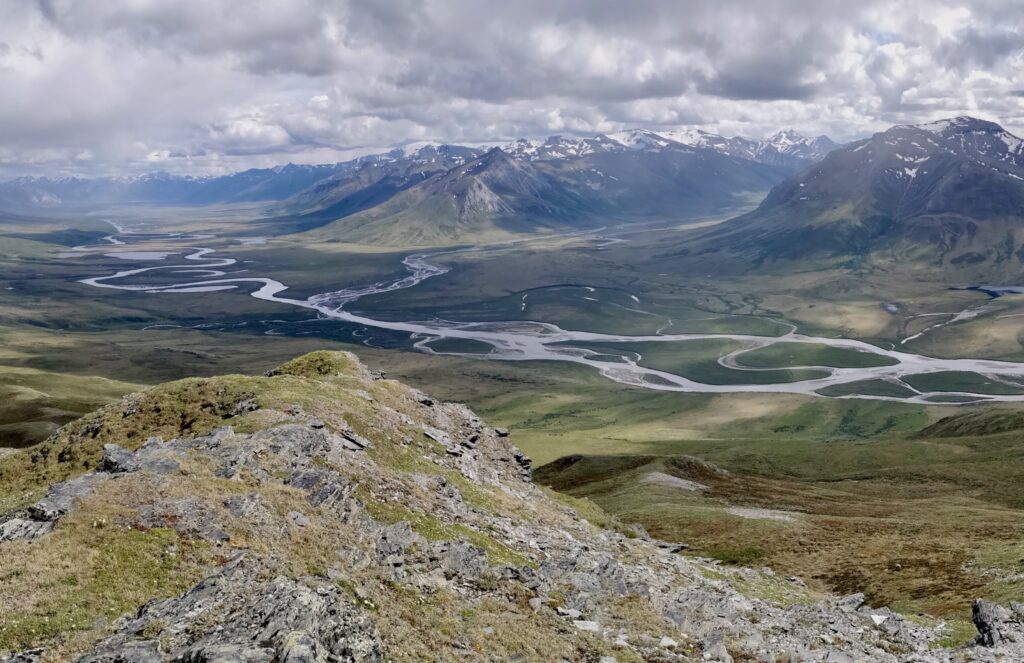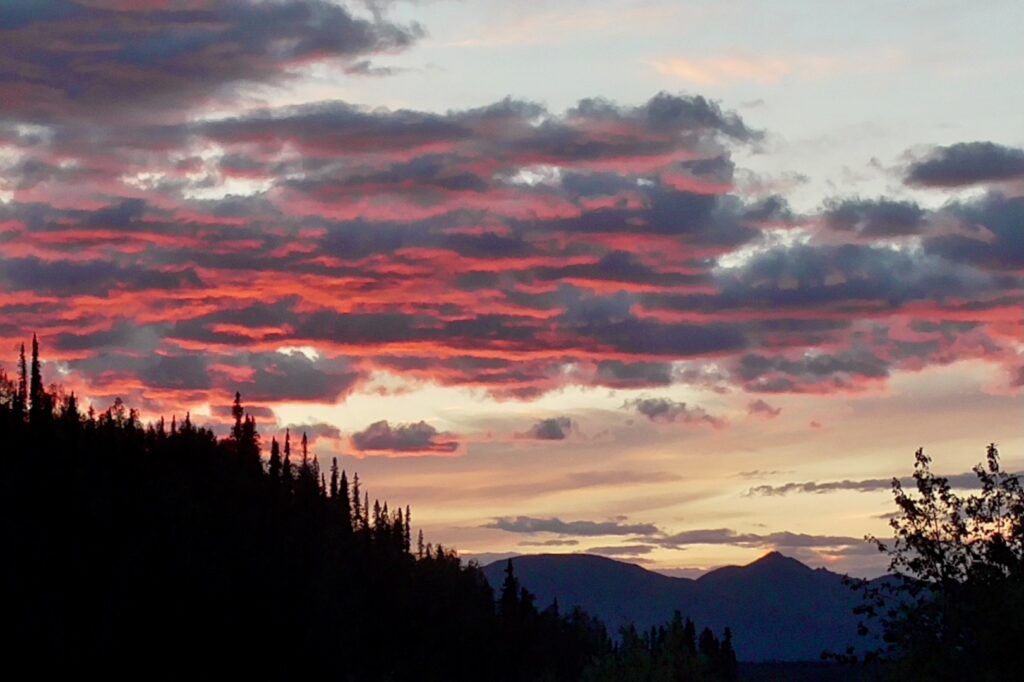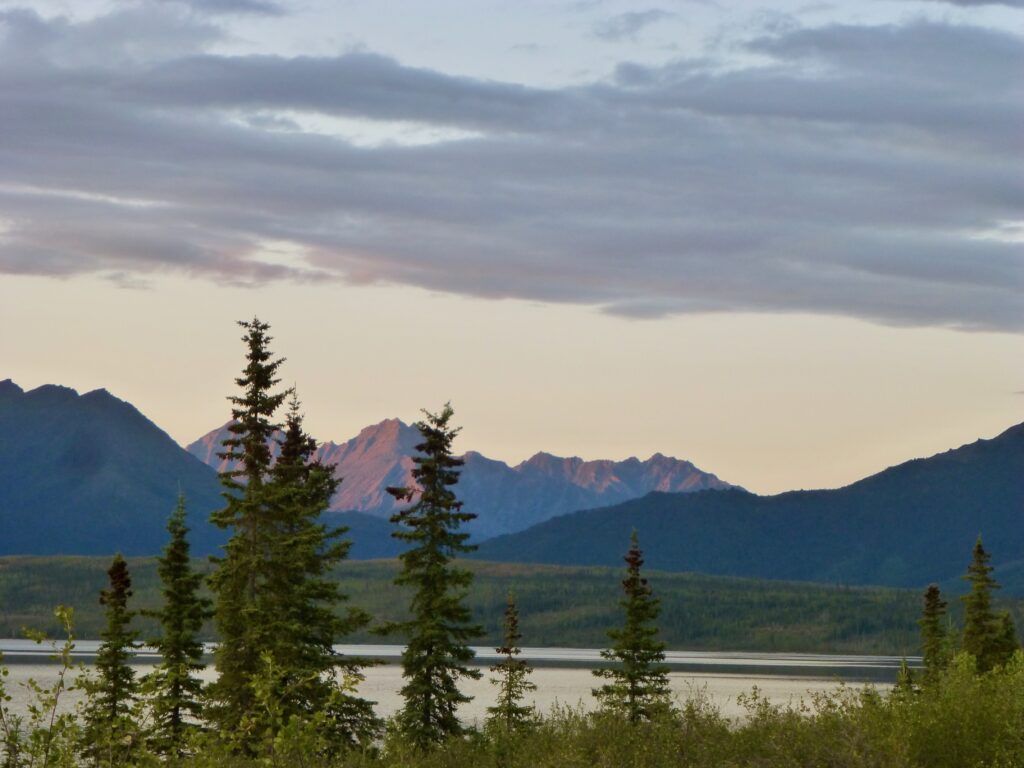Ambler Road: A Disastrous Proposed Industrial Corridor

In the heart of northern Alaska, a new development project threatens wild landscapes. The Ambler Road project would be a new, 211-mile industrial corridor on the south side of the Brooks Range, extending west from the Dalton Highway to the south bank of the Ambler River. Here’s a map showing the scale of the project.

Image: Alaska Division of Mining, Land and Water
The proposed road would cut through and destroy more than 1,400 acres of wetlands and cross nearly 3,000 streams. But the greatest risk this road poses is its possibility to develop multiple open pit copper mines, threatening fisheries of the Kobuk and Koyukuk rivers and other traditional subsistence resources that locals depend upon.
At risk is not a mere road, but a massive industrial corridor that would threaten North America’s largest protected and roadless region, as well as the food security and clean water of Alaska Native Tribes. It would cut through Gates of the Arctic National Preserve, across sheefish and salmon spawning habitats, and bisect the migration of one of the greatest caribou herds left on Earth.
Read on below to hear from one of our supporters about this special region, and why it is so crucial to protect it.
Why Protect This Place?

Image: Night sky on the Kobuk, courtesy of Court Ogilvie
I’ve long been fascinated by the wilderness of the Alaskan Arctic. Conservationist Nancy Newhall once wrote that, “The Wilderness holds answers to questions man has not yet learned how to ask.” I love that perspective, as there is so much mystery and so much discovery in these wild lands.
My first visit to the Arctic was a trip on the John River, on the south slope of the Brooks Range. At the time, it was the wildest and purest place I’d ever been. It surely still is. I traveled as gently as I knew how, sensing the fragility of this landscape. Others before me must have done the same, as my 60-mile float didn’t reveal any signs of previous visitors. Every river bar was shaped by nature alone, and every vista continued unchecked into the horizon. There were no bridges, no trails, no campsites, and no roads.
These are hungry lands, but they are not barren. In the Noatak headwaters, I watched a 600-pound musk ox disappear into a thin stand of willows with a single step. On the Kobuk, I caught 30 pounds of fish in two casts. On the North Fork Koyukuk, I shared the river with a white wolf. Observing wildlife is always a privilege, but that John River trip was also the first time I recall an animal observing me. A common goldeneye repeatedly fluttered above my raft trying to figure me out.

Image: On the summit above Nigikpalvguruvrak Creek on the Noatak River, Courtesy of Court Ogilvie
It’s hard to describe the Arctic. If you choose words that convey natural perfection, you’re close to the truth. I’ve watched the sky change to gold and then bright pink, colors I’ve never seen anywhere else. I’ve spent countless days where the only sounds were from the natural world. I’ve marveled at midnight shadows that stretched 40 feet. These are unique experiences from pristine and unspoiled lands, and I always feel a connection to an earlier time. This is the way the world used to be.
I also appreciate that the Arctic wilderness is a fair arbiter; it makes no distinctions between the visitor and the flora and fauna that call it home. The range of experiences here are shaped by an element of skill, but also luck or fortune. I’ve looked out over boundless valleys, and I’ve waited out weather in small tents. I’ve lounged around on sunny days, and I’ve endured stinging cold. I have always felt closer to the earth. Often I’ve felt closer to myself and to my fellow adventurers too. The discovery of the Arctic is both within and beyond.

Image: Evening light on the Arrigetch Peaks from Walker Lake, courtesy of Court Ogilvie
Perhaps a measure of true wilderness is that the same places can offer completely different adventures. On back-to-back trips to an identical section of river, I saw different flowers, wildlife, weather, and water levels. Small islands formed, banks moved several feet, and camps disappeared and reappeared. My world felt bigger. In a span of mere days, fundamental things had changed — including me.
I’ve always found comfort in knowing that these wild places existed, even before I had the chance to explore them. I am also keenly aware that the future is uncertain. This land is untouched, but it is not untouchable. Sometimes I close my eyes and think back to that first trip, and I appreciate how much it has expanded my view. I hope to be back, to see what is different, to be reassured by what is the same, to let it change me more.

Bio: Court Ogilvie is an adventure traveler based in Arlington, Virginia. His love for Alaska dates back 20 years, after trips ranging from sea kayaking in Southeast to mushing in the Yukon. Court grew passionate about preserving the Arctic after a float trip with his wife Suzy on the Kobuk River. When he’s not advocating for wild places, Court enjoys whitewater kayaking, cycling, mountaineering, and backcountry cooking.
How to Get Involved
The history of the proposed Ambler Road project has been ongoing for years. In 2020, the U.S. Department of Interior, under the Trump administration, approved federal permits for the road. You may recall Alaska Wilderness League asking for your support on this issue back in February of 2022. At that time, we had an opportunity to tell the U.S. Interior Department to revoke the permits and commit to a new environmental and cultural review — and 12,000 of you acted to oppose the road!
Thanks to that advocacy, and thousands of other engaged activists from the Ambler region, Alaska, and across the nation, we now are close to exactly what we requested.
Extensive public advocacy from locals as well as many of our partners in the Defend Brooks Range coalition led to federal approvals that the road be remanded for review by the Biden administration in 2022. The outcome of this review will be a supplemental environmental impact statement (SEIS), the draft of which we expect to become available for public comment anytime in the coming weeks.
While getting here will have taken years, this will be our moment to encourage the Biden administration to reconsider the disastrous Ambler mining road. We are calling on our supporters to help elevate this issue and demonstrate the overwhelming demand to stop the proposed Ambler Road.
You can help us defend the Brooks Range by keeping an eye on your inbox and social media channels for more information and by participating in the upcoming comment period.
